(Written by Mark H. Avery)
In this series, I have been sharing my own personal story in the LEGO hobby, including slowly building up a collection of sets from the 1970s to the 1990s, and constructing a LEGO city. If you like, you can read Part 1, Part 2, Part 3, Part 4, Part 5, Part 6, and Part 7 by clicking on the links. For today’s chapter, I will discuss my experiences with shopping for LEGO and, more specifically, dealing with the LEGO Company on various levels…
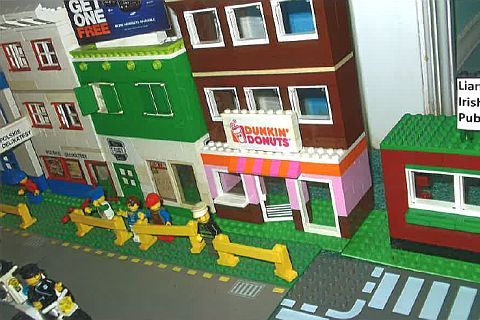
As I’m sure you can understand if you have read my previous articles, at some point, my interest in LEGO became – I admit – an obsession. Part of the obsession was the search for information, especially bargains. Often, the thrill of the search became as important as actually buying and building LEGO sets.
Remember, much of this was happening pre-Internet. I’d look at toy industry magazines (Playthings, The Toy Book) to see what upcoming sets would be offered. For a couple of years, I went to the New York City Toy Fair. Back in the day, there wasn’t much security there, and I could walk through the showrooms and receive the sales pitches. Then, I found out that an older gentleman I knew was in the toy business. He gave me a business card to get into the Toy Fair officially.
➡ DEALING WITH LEGO AS A ‘BUSINESS’…
As I recall, LEGO had a large permanent official showroom on the eighth floor of the Toy Building on Fifth Avenue in Manhattan (the building is now all condos). One year, I got the grand tour, and then a salesman sat with me and wanted me to place an order. I gave my company a name, Peri’s Place Toys, and I was in business. LEGO sent me a wholesale catalogue and order form. There was a Pamela Martin, telemarketing specialist. I was even supposedly eligible for the company’s co-op advertising program.
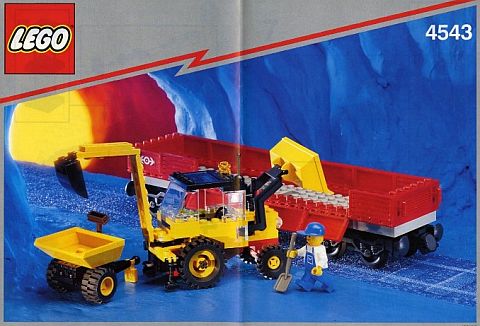
I ordered about six to ten cases of LEGO sets over maybe three orders (this was back around 1991–1995). I know I ordered a case of the #525 LEGO Basic Building Set, and a case of minifigure packs. I sold 3 or 4 of them at list price. I purchased a carton of the #4543 LEGO Railroad Tractor Flatbed set with diggers. I still have 2-3 of these in “inventory”. At one point, I ordered the #6399 LEGO Airport Shuttle monorail. It was a carton of only two. I think I paid $100 per unit, and sold the second one to a cousin for $100 – considerably below list price. In hindsight, I should have kept it, but $100 was a lot of money back then. I’m not sure how I eventually lost that connection as a “store.”
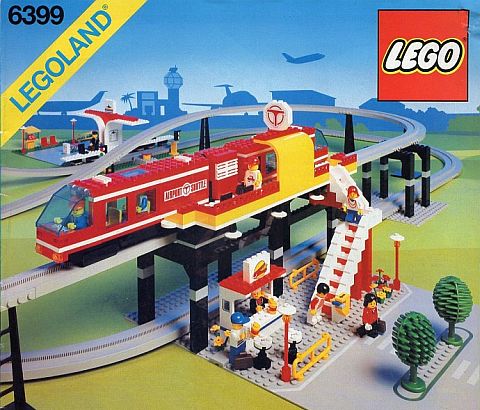
A friend currently in retail often complains about the LEGO Company. From what I can figure out, stores pay LEGO about 40% less than list price, which doesn’t allow for a big markup. From that 40%, the store needs to pay shipping besides all the usual retail expenses. Shipping used to be from Enfield, now it’s from Texas or someplace. The company now has large minimum orders, insists that stores carry a large assortment of products, and assign certain shelf space to the brand. So lots of small general stores (there aren’t too many toy stores left) are cut out from carrying LEGO.
➡ DEALING WITH LEGO CUSTOMER SERVICE…
I eventually learned about LEGO Customer Service, the predecessor to LEGO Shop-At-Home, officially created in 1979. At that point it was headed by (I assume a fictitious) Susan Williams, whose name was in every retail catalog. You could write to her for missing or lost pieces. I must have been her best customer! I even had two or three relatives write away for spare parts. The parts usually came free, but sometimes with a small bill. These were pieces that could not be found in basic sets, and I noted that in my letters.
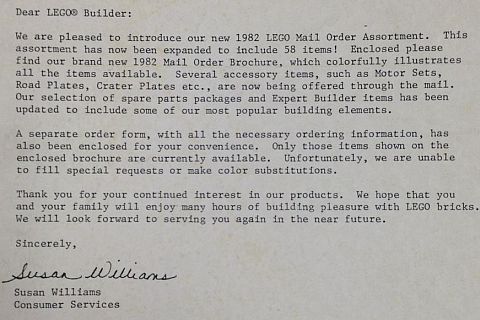
I seem to recall inquiring and having a written personal invitation to visit the LEGO Enfield complex, but as the date approached and I tried to confirm, the appointment evaporated. I ended up spending 15-20 minutes with my family driving around Enfield – a nice little town – before continuing my planned trip north to Springfield, MA and the Basketball Hall of Fame.
At some point, I stumbled across LEGO’s weekly telephone sales. Each week there would be several sets on sale, sometimes at significant savings. (This was before the internet was so big.) There was a period where I was ordering something just about every week. Usually several different sets that I wanted for my city, or multiple copies of a single set that was a good bargain and potentially useful in the future.
Maybe my best deal ever was a #4400 LEGO Build with Bricks large red tub that was apparently sold only by Wal-Mart in Canada in 2003. It came from Shop-At-Home with 700 pieces plus a strapped on box with 300 extra pieces – some of them strange shapes and colors for those years. I paid $10 a tub and purchased seven (I should have bought 70 or 700!). I also often called to find out that everything I wanted was already sold out. The worst case was probably when the old metal track points (turnouts) went on clearance. I placed an order for ten, the order was accepted, and a week later I was notified that they were sold out. Then, I got in the habit of calling late every Sunday night when the new sales started. There were no quantity limits, so big fans and resellers would grab this stuff. Eventually, someone started posting the weekly listing on line, on LUGNET.com.
Then, there was the LEGO Education division – at some point called LEGO Dacta – which ran through several management and branding versions. I purchased many of those sets either from LEGO, or from an authorized educational products distributors. I don’t think the prices were ever so great, especially given that these were bulk purchases. I remember in particular a long gone set of five small town buildings in one package. There was also 3-4 packets of road signs (#6427 LEGO Road Signs) packaged together in a small carton. (I think I still have two unopened cartoons.) A package of eight road plates was another LEGO Dacta purchase. There was also a LEGO Dacta tub with a U-shaped hospital.
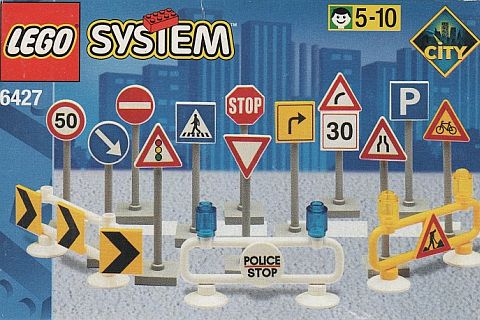
Around 1985, I read an article somewhere about a young woman (Francie Berger) who had been hired as the first LEGO model builder working in Enfield, CT, LEGO’s base in the USA. I wrote to her asking how I could buy LEGO garbage cans and other “street furniture”. Back then, those were rare items, and what’s a town with three mailboxes and two garbage cans? She wrote back that LEGO doesn’t sell individual items like that (this was before Shop-At-Home really existed) but she’ll try to help me get what I wanted. Soon, a small package came in the mail from Enfield with a bill for a 10 or 20 dollars.
A few months later, Ms. Berger contacted me. Some woman named Helen had been in touch with her about selling the lady’s father’s LEGO collection. He had built a city after he went legally blind, but had since passed. There was a fairly large detailed inventory. Was I interested? I was. She put us together and we spoke and negotiated. I drove up with my daughter to a town near Poughkeepsie, and came back with a trunk loaded with $450 worth of LEGO – some were really old and unique pieces that I still have. The original owner had cut slits in some of the baseplates so he could run wires through them and electrify his city. (Unfortunately, I never saw pictures of his layout.)
➡ DEALING WITH LEGO STORES…
LEGO opened a store (its first American store?) in a factory outlet mall (Potomac Mills) in Northern Virginia. At some point, they had lots of small town sets on sale that I was able to order over the phone. (This was during the era when most town sets were juniorized.)
Over the years, I must have visited a dozen different official LEGO stores, including the half dozen in the New York metro region. I’ve also been to the Bricks & Minifigs store in Billings, MT and the San Antonio Plastic Bricks store in Texas. Sometimes the conversations with the owners are more interesting than the bricks purchased. Occasionally, the Pick-A-Brick walls at LEGO stores have rather unique items (I once purchased horses!), but usually they carry rather standard stuff. I try to buy odd colors, mainly 1x2s, small plates, foliage when available, etc. I could spend hours at the Pick-A-Brick wall putting small bricks together in stacks of seven or eight, and trying to stuff as many bricks as possible into a cup. I still can’t decide whether the small cups or the large cups offer better value.
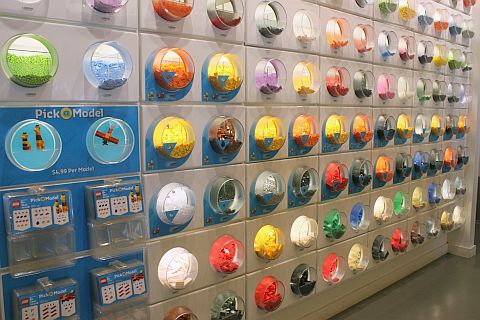
What determines what assortment appears at the Pick-A-Brick wall? Employees in both Manhattan stores insist it’s whatever the company sends them, implying that it often comes from overproduction. I can’t tell what logic is used, except to say that they almost never have windows and doors at the New York stores, even though it would seem like every kid and adult would want them.
Only once, in Bridgewater, NJ was I stopped because the cup wouldn’t quite close. The stores also used to sell plastic grab-bags of parts which sometimes yielded great parts and figures from broken down exhibits. At the same time, you could also end up with five right side car doors with no left ones (I was disappointed when that happened). Every so often, there’s a real bargain at a store, but most sales are just 20% off the list price. As can be expected, LEGO City and other basic sets seem to be on sale less often than those tied to specific movies or odd sub-themes. I once was ready to purchase ten minifigure display cases from the Secaucus, New Jersey store (they were on sale, and they are a great source of 1x4x5 windows). I left them on the shelf while I went browsing, and when I got back to the sales corner, they were gone! It’s a tough life out there.
One day, in 2016, my younger daughter Robin called me. She was having a random discussion about shopping at the Staten Island Mall with a colleague at work. She discovered that the friend’s sister worked part-time at a LEGO store in the city. If I could go in when the sister was there and introduce myself, she could probably get me the employee discount – typically 50% off store prices. Since Manhattan LEGO brand stores charged about 10% above regular price, that translated into a roughly 40% discount.
I went in and bought whatever I thought I could carry on the subway together with my briefcase. There was nothing underhanded about this. The store manager himself checked me out, gave me the discount, and processed my credit card. I visited one or two more times and got the employee discount, but the company was getting more restrictive, and my contact soon left the company as well. (Apparently, LEGO stores have very high employee turnover.) A year later, talking to another store employee, she identified herself to me as a student in the school where I worked, and she also offered me the employee discount. I decided it was unethical to take her up on the offer. I think she’s long gone as well. Bottom line, LEGO shopping can be a real adventure!
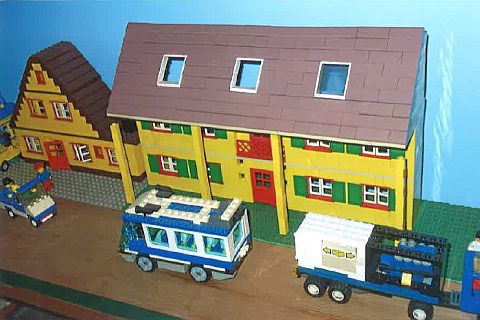
I hope you enjoyed this story. Shopping for LEGO outside the company’s own outlets has also been an ongoing activity. That will be the subject of my next article. Your comments, questions, and feedback are always welcome. Also, I welcome any tips about great LEGO bargains and ideas for new city creations. Thanks for reading!
Mark H. Avery is a LEGO Town/City builder and collector for over 30 years. This is the first of a series that will trace his personal LEGO experiences and offer his personal insights on LEGO related issues. All opinions are his own.
And you might also like to check out the following related posts:












I’m also an old time fan and this article brings back lost of memories! I forgot about all the trouble we had to go through to get extra parts! And I do remember getting mailings from Ms. Williams!
Has anyone written a “history” of Lego “Shop-at-Home?”
Its evolution would probably be a good case study for a marketing class.
Putting “History of LEGO Shop-at-Home” doesn’t bring up any results, but I’m fairly certain I read some bits and pieces of information here and there. I agree, it would make a good study!
Lego has a tradition of great customer service and going above and beyond for their customers. Really enjoyed this episode of the story, and I envy your sand red roof pieces! 😀
Thanks. I enjoy writing them.
What ever happened to the sand red color? I’d much prefer that and the dark red to all those shades of pink and purple.
Sand Red had a very short lived span 2001-2004 and was never fully adopted. It was removed in the color purge.
Ha-ha! It’s funny you had a whole business set up right on the spot! I wish lego was still so lax, but I understand they are trying to discourage resellers. I wonder if Susan Williams was completely fictional, or was she a real person
That’s a great question. Is there anyone out there who knows or who can find out?
My understanding is that all communication was done in her name and with her signature, but whether she was ever a real person, or just made up, I’m not sure. I can ask on the Ambassador Forum, if you guys want.
That was a great story. Thank you for sharing it. I remember some of those supplementary packages. Too bad they no longer have them.
Thanks for the complement. I’ve started working on the next installment.
I’m with you. The supplementary were good. I especially miss the windows packages and the clear and translucent wall panels that I also used for windows.
This was a great read! Like a wonderful chapter from the Lego history books. I have heard from some other older fans who share similar stories. I was just wondering do you prefer the old way of interacting with Lego? Or the new way of being able to order online and through the pick a brick wall?
I’m not a big fan of online shopping for anything, although I do shop online (mainly for Lego.) The pick a brick wall is a great concept, but my recent experience (in NYC) is that the selections are fairly routine bricks and colors and that much of the selection hasn’t changed in months. I/we (town builders) need WINDOWS in various sizes and colors.
It is great to hear from you. I’m curious how you came across the blog post now.
My more important question is where I read the original profile so many years ago? I also recall a much more recent article about Lego designers in the U.S, which pointed out that you were the original U.S. base designer, but had eventually moved on to other things.
I think this was all before email was widely used and so that we had mailed back and forth a couple of times. Then I believe I received a phone call from you from a woman in upstate NY had inherited her semi-blind father’s Lego and wanted to sell it….
I’d love to hear back — I would think as a former (unique) employee of Lego, you would have many insights that the community would love to hear about.
All the best!
I loved reading this! It appears that being a Lego fan was always adventurous. You should open a museum with all your old sets! 😀
Wow! I’m the Francie Berger mentioned in your article and o have absolutely no recollection of this! Wish I’d bought the collection for myself 😝
Wow! Francie! That’s fascinating! I’m forwarding your comment to Mark, who wrote this article. I’m sure he will find it a nice surprise, and may even respond back here in the comment section. What a great connection! 🙂